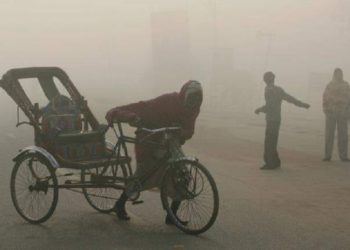KATHMANDU: The Department of Hydrology and Meteorology has released a study report on the extreme precipitation recorded in Kanchanpur on July 7, terming the phenomenon a ‘Terai Cloudburst.’
The report, made public on Sunday, followed a field visit to Dodhara, Hanumannagar, and Sundarpur to inspect automated rainfall measurement instruments.
Data from the device in Sundarpur deviated from Department standards, prompting further assessment.
Hanumannagar experienced 102 mm of rainfall in one hour, from 10:05 pm to 11:05 pm on July 7.
From 8:45 am on July 7 to 8:45 am on July 8, Hanumannagar received 573.6 mm of rainfall, Sundarpur 556.4 mm, and Dodhara 624 mm.
According to Department spokesperson Sunil Pokhrel, the downpour resulted from the monsoon’s combination in the upper, middle, and lower atmosphere and a low-pressure system in the Westerly wind.
The extreme rainfall inundated the plains of Kanchanpur and caused damage due to the swelling of various rivulets.
Satellite images captured at 6:15 am on July 9 showed that approximately 98 square kilometers (around six percent of Kanchanpur’s total area) were inundated, affecting around 85 square kilometers of agricultural land and about 14,000 structures.
The report concluded that timely dissemination of special bulletins, impact-based meteorological forecasting, mass SMS services, sufficient preparedness, and effective search and rescue operations played major roles in mitigating the damage.
It recommended increased investment in weather forecasting and preparedness to minimize disaster risk, as climate change is expected to increase monsoon-related incidents.









Comment